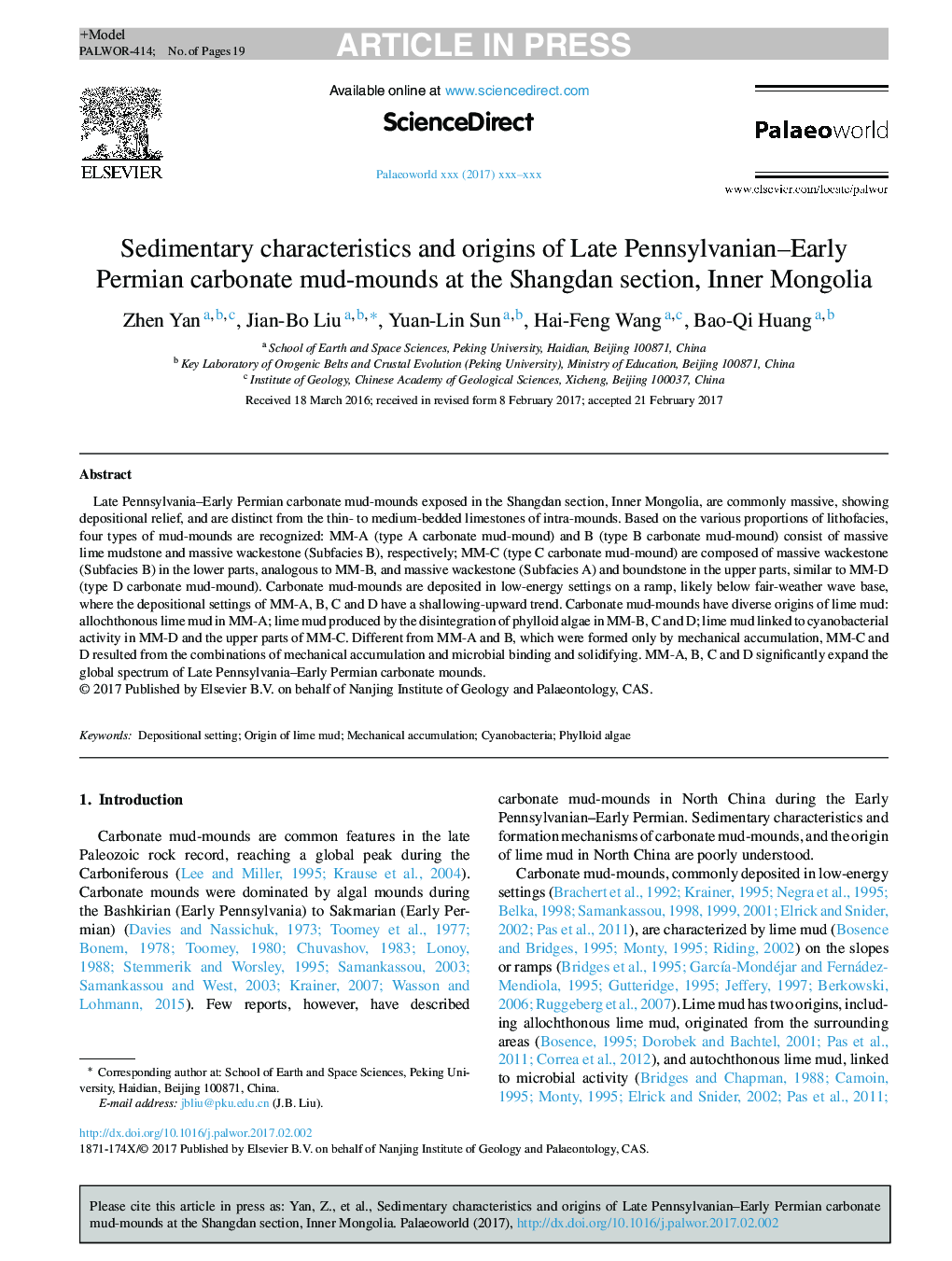| کد مقاله | کد نشریه | سال انتشار | مقاله انگلیسی | نسخه تمام متن |
|---|---|---|---|---|
| 8916565 | 1642273 | 2017 | 19 صفحه PDF | دانلود رایگان |
عنوان انگلیسی مقاله ISI
Sedimentary characteristics and origins of Late Pennsylvanian-Early Permian carbonate mud-mounds at the Shangdan section, Inner Mongolia
ترجمه فارسی عنوان
ویژگی های رسوبی و منشا گلدان های کربناته پرمین در اواخر پنین، در بخش شانگهای، درون مغولستان
دانلود مقاله + سفارش ترجمه
دانلود مقاله ISI انگلیسی
رایگان برای ایرانیان
موضوعات مرتبط
مهندسی و علوم پایه
علوم زمین و سیارات
فسیل شناسی
چکیده انگلیسی
Late Pennsylvania-Early Permian carbonate mud-mounds exposed in the Shangdan section, Inner Mongolia, are commonly massive, showing depositional relief, and are distinct from the thin- to medium-bedded limestones of intra-mounds. Based on the various proportions of lithofacies, four types of mud-mounds are recognized: MM-A (type A carbonate mud-mound) and B (type B carbonate mud-mound) consist of massive lime mudstone and massive wackestone (Subfacies B), respectively; MM-C (type C carbonate mud-mound) are composed of massive wackestone (Subfacies B) in the lower parts, analogous to MM-B, and massive wackestone (Subfacies A) and boundstone in the upper parts, similar to MM-D (type D carbonate mud-mound). Carbonate mud-mounds are deposited in low-energy settings on a ramp, likely below fair-weather wave base, where the depositional settings of MM-A, B, C and D have a shallowing-upward trend. Carbonate mud-mounds have diverse origins of lime mud: allochthonous lime mud in MM-A; lime mud produced by the disintegration of phylloid algae in MM-B, C and D; lime mud linked to cyanobacterial activity in MM-D and the upper parts of MM-C. Different from MM-A and B, which were formed only by mechanical accumulation, MM-C and D resulted from the combinations of mechanical accumulation and microbial binding and solidifying. MM-A, B, C and D significantly expand the global spectrum of Late Pennsylvania-Early Permian carbonate mounds.
ناشر
Database: Elsevier - ScienceDirect (ساینس دایرکت)
Journal: Palaeoworld - Volume 26, Issue 4, December 2017, Pages 612-630
Journal: Palaeoworld - Volume 26, Issue 4, December 2017, Pages 612-630
نویسندگان
Zhen Yan, Jian-Bo Liu, Yuan-Lin Sun, Hai-Feng Wang, Bao-Qi Huang,
